CAST GOLD RESTAURATIONS
Material that deserves a return.
Gold is legendary in dentistry. It has been used for thousands of years – the first known gold dental work comes from the Etruscans in the 7th century BC, who used gold bands to fix prosthetic teeth in place. And even though we now have a wide range of modern materials at our disposal, in my opinion, gold is experiencing a well-deserved renaissance.
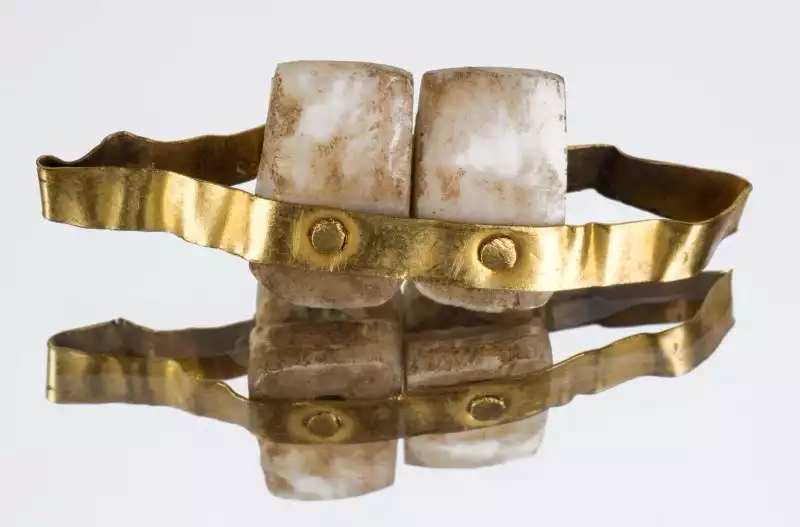
Gold is fascinating not only from a historical perspective, but primarily due to its properties. It offers an excellent marginal seal, and thanks to its natural hardness – similar to that of enamel – it does not damage the opposing dentition. It is sufficiently strong without being brittle, making it ideal for inlays and onlays where we aim for maximum precision, conservation of tooth structure, and long-term durability.
In addition, gold has an exceptionally smooth, inert surface that significantly reduces plaque retention and bacterial colonization – making it naturally friendly to the gums and periodontium.
In indirect, laboratory-made restorations, pure 24-karat gold is not used – it would be too soft. Instead, high-quality gold alloys containing platinum, palladium, or silver are used for crowns, inlays, onlays, or overlays, typically with at least 40% pure gold content. The resulting material is strong, stable, easy to work with, and behaves predictably in the oral environment.

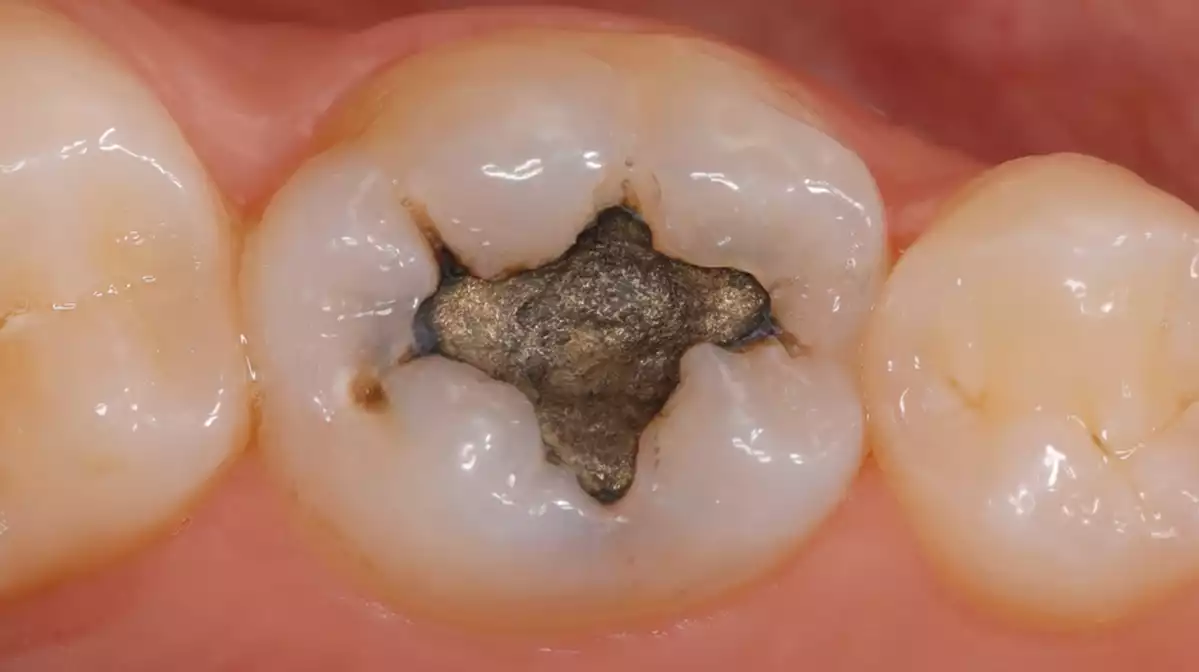
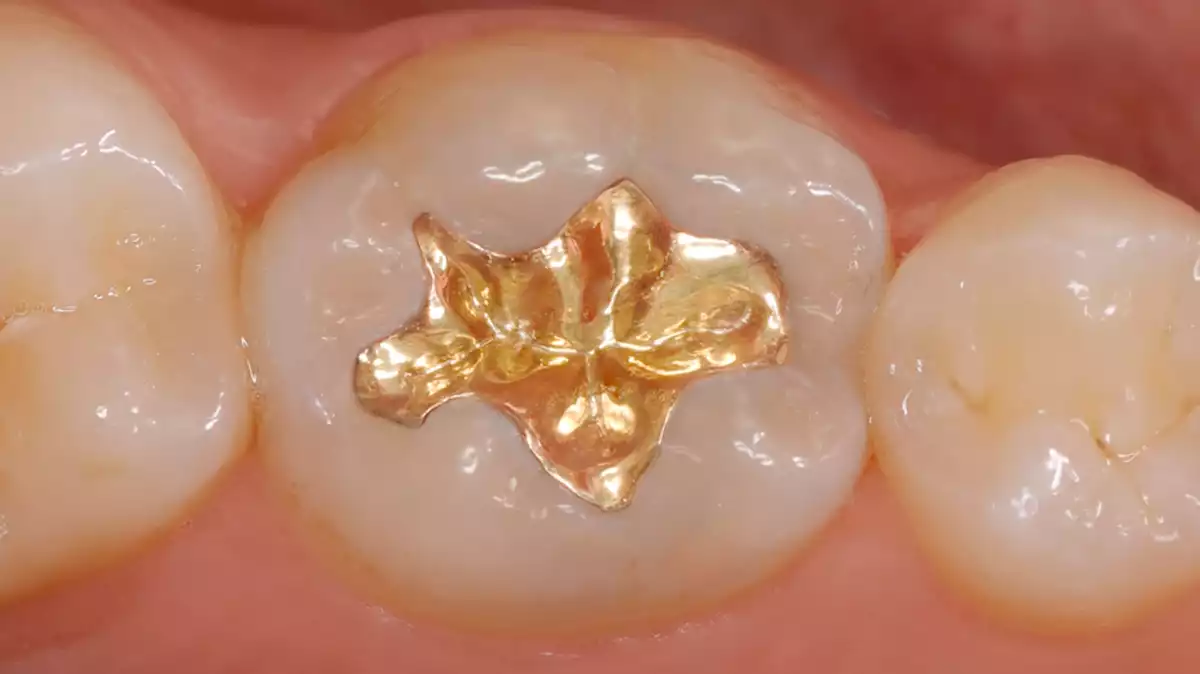
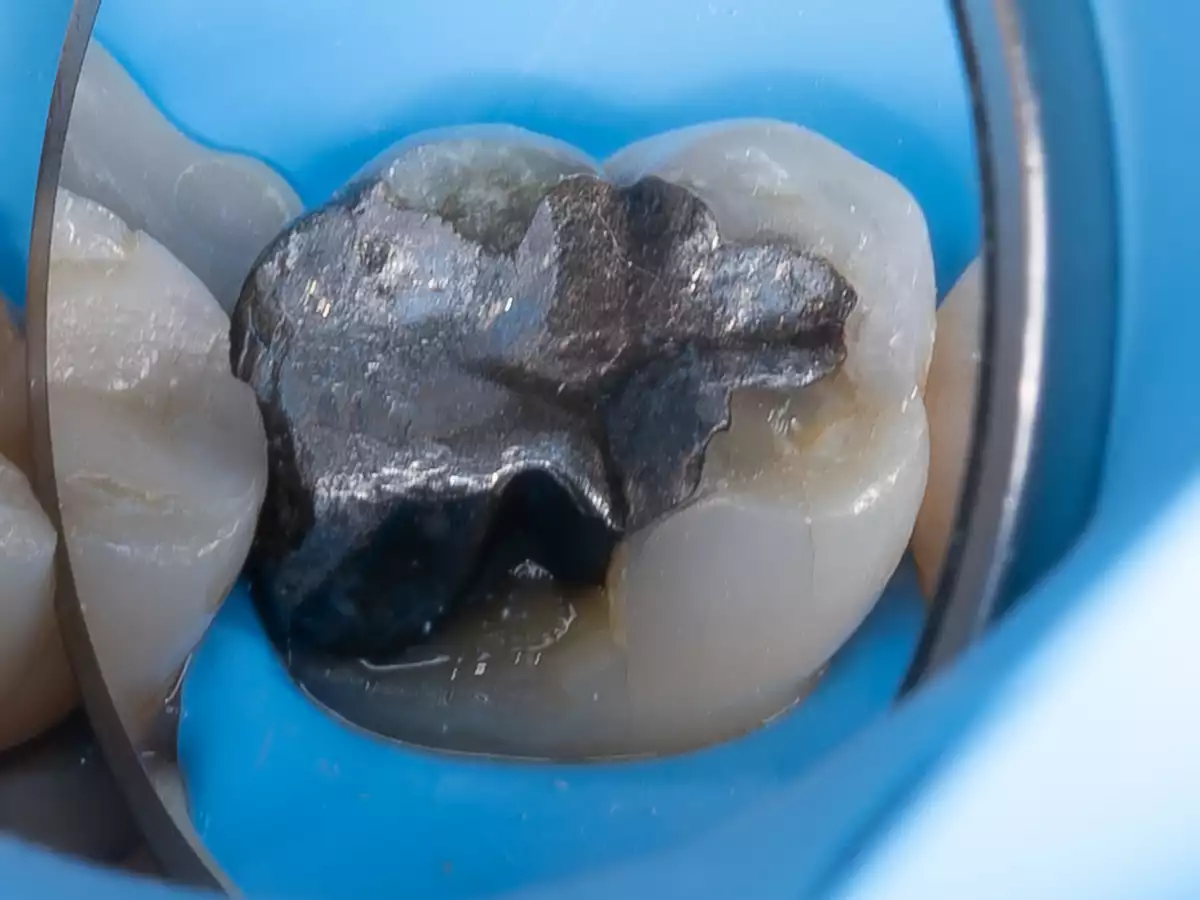
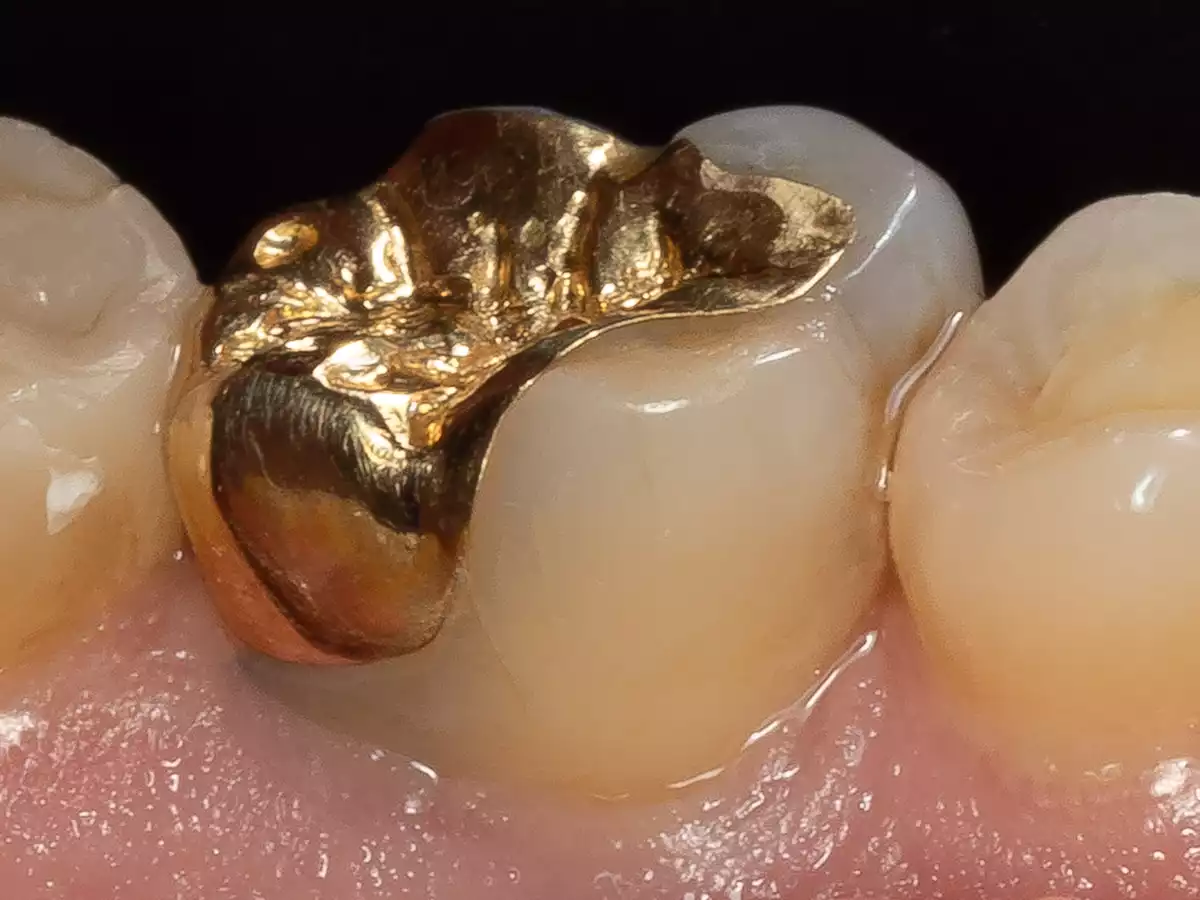
When people think of gold in teeth, many imagine a gold crown on their grandmother – or someone lacking taste, perhaps even “on the fringes of society.”
But that image is outdated and has little to do with the reality of modern gold restorations.
In posterior regions, gold is virtually unmatched. No other material withstands chewing forces for as long or as elegantly. In my practice, I have patients with gold inlays and onlays that have been in function for 40 or even 50 years – caries-free, fracture-free, and still working perfectly.
With proper indication, a gold restoration can truly last a lifetime.
One of gold’s great advantages is its behavior in patients with parafunction. Bruxism and clenching – in other words, pathological overloading – are something I observe in the majority of patients today, even if they are unaware of it. Ceramics in these conditions often fail – whether by repairable chipping or, worse, vertical root fracture that leads to tooth loss. In such cases, gold is a safe bet.
In patients where other materials have failed and restorations had short longevity, gold has repeatedly proven to be a reliable long-term solution.
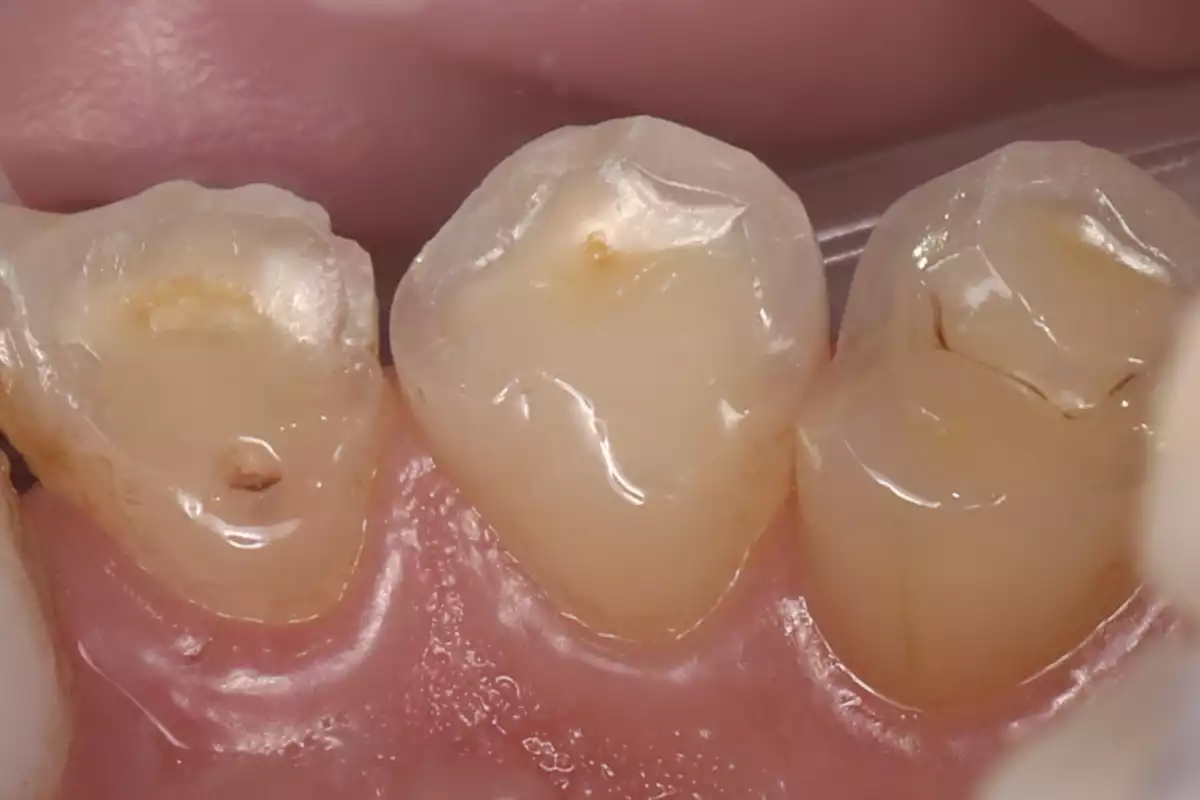
This case concerns a close friend of mine, whom I’ve known for over 20 years. In the molar region, there was repeated failure of both composite and ceramic restorations due to pathological overloading caused by bruxism. The presence of wear facets clearly confirmed this excessive stress.
For teeth subjected to this kind of loading, gold is the ideal material of choice – thanks to its exceptional resistance to occlusal forces, its gentleness to opposing dentition, and its excellent marginal adaptation.
In this patient, gold restorations have been functioning flawlessly for over 15 years and still look the same as they did on the day they were placed.
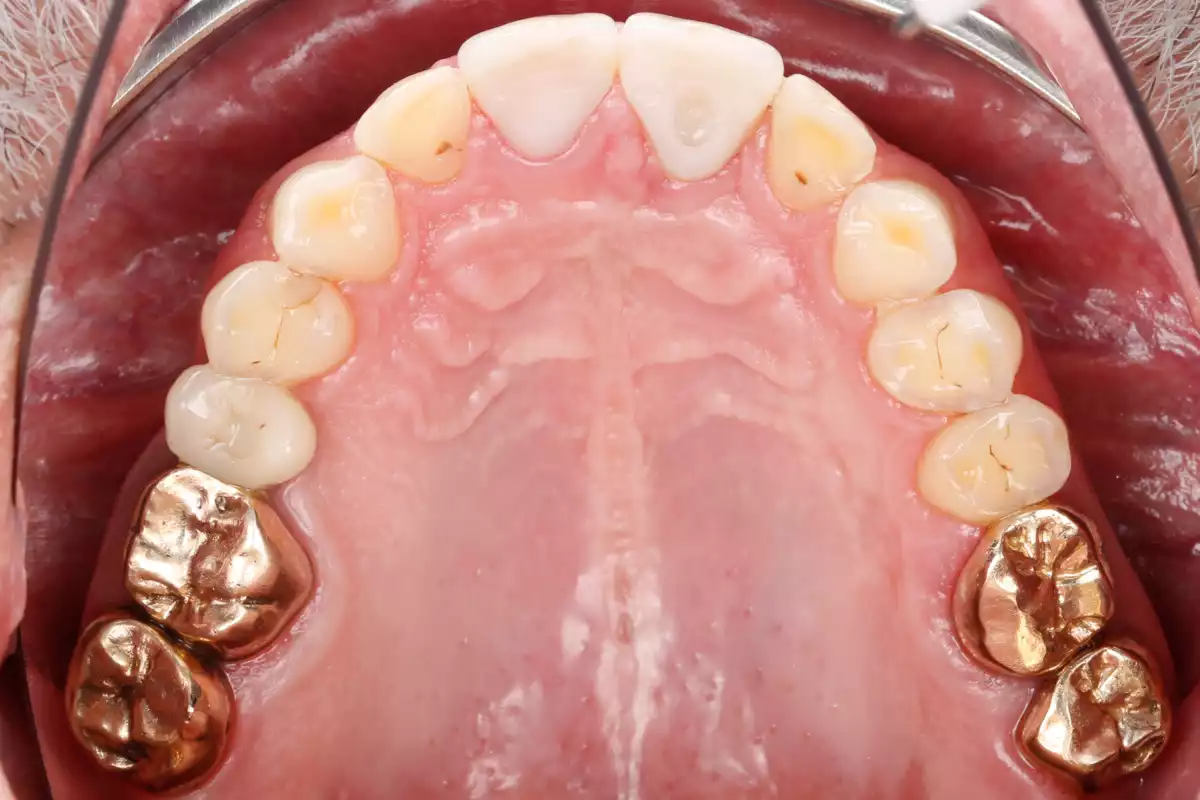
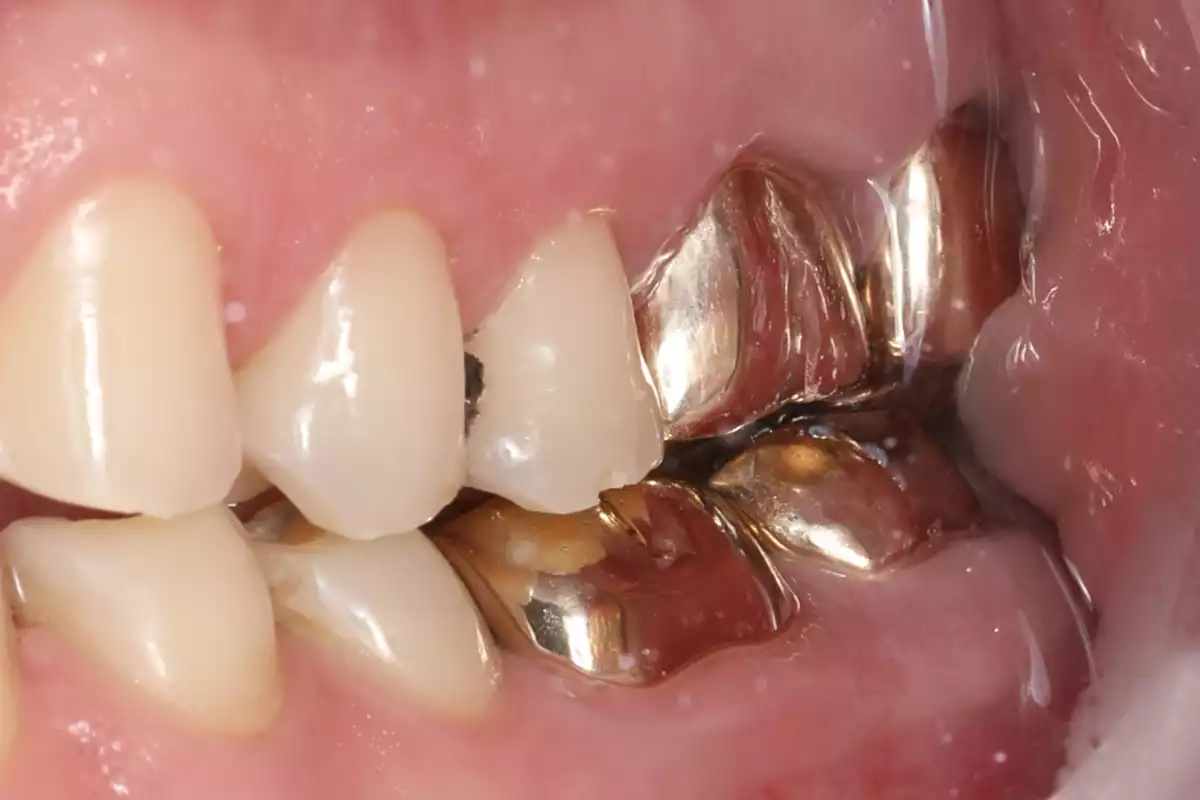
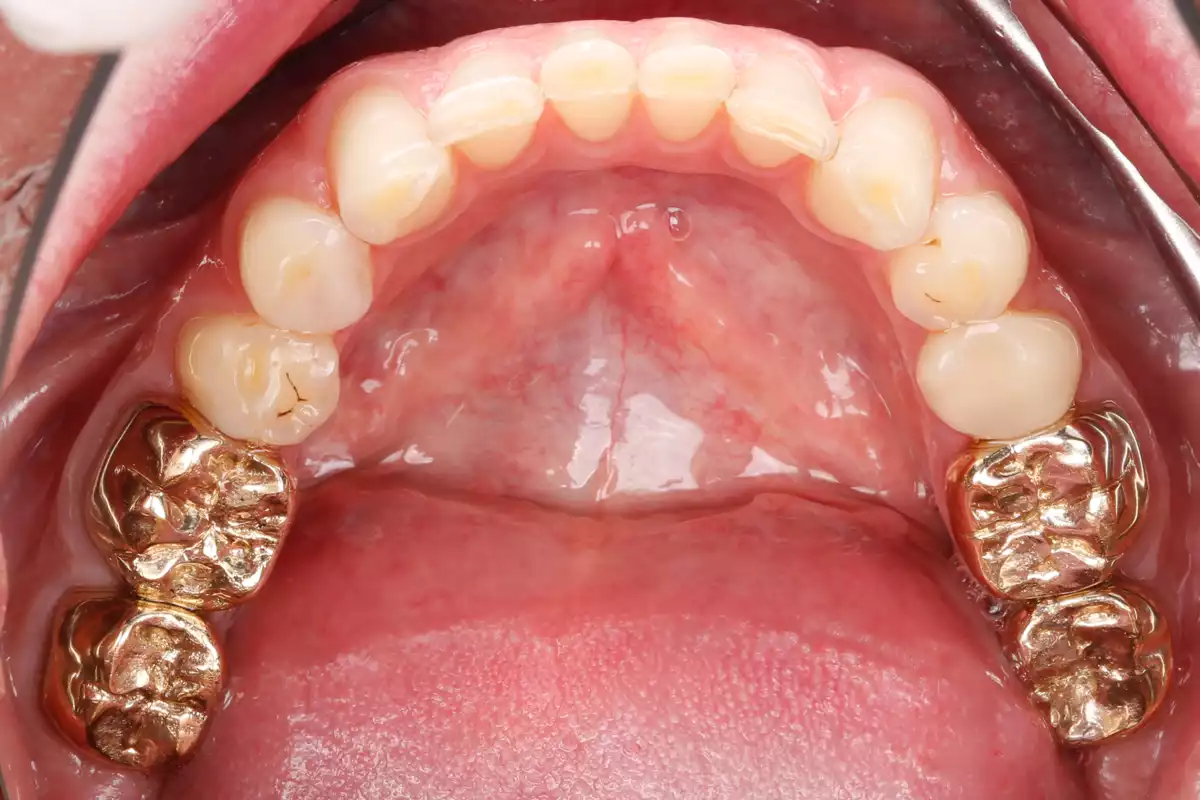
One step further: direct gold restorations
If there’s a true pinnacle in gold-based restorations, it’s without doubt direct gold fillings.
This is a technique that’s almost forgotten today – technically and time demanding, but at the same time extremely elegant and precise. For the right small cavity, it is truly a lifelong restoration.
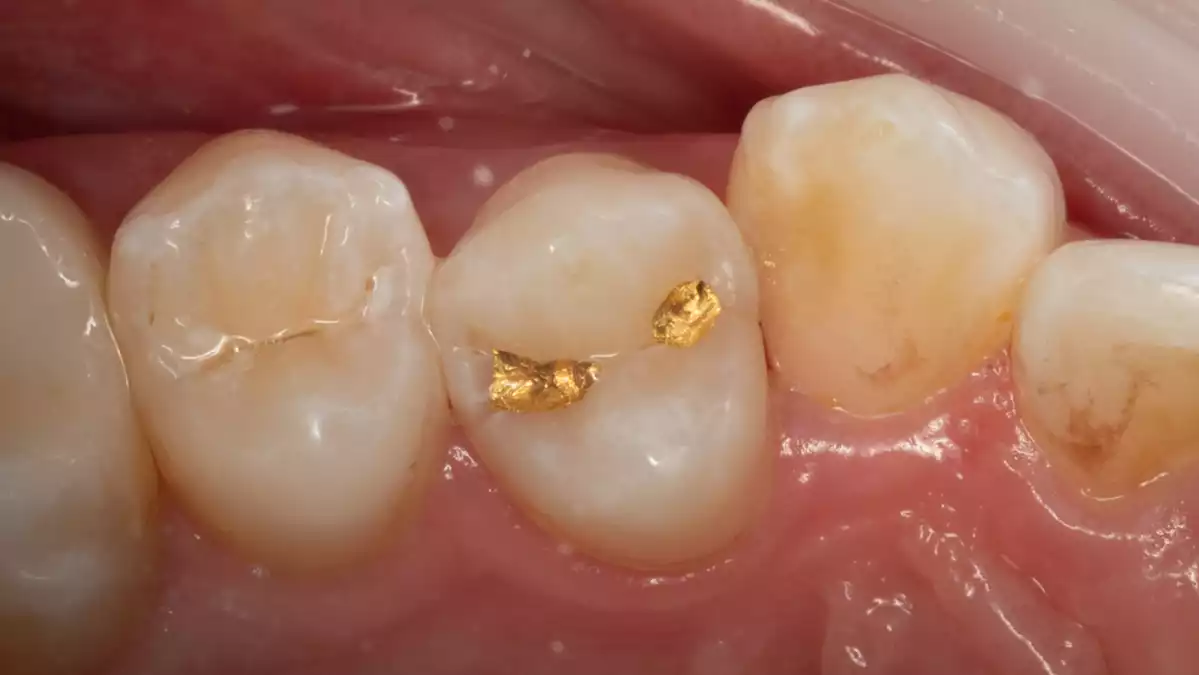
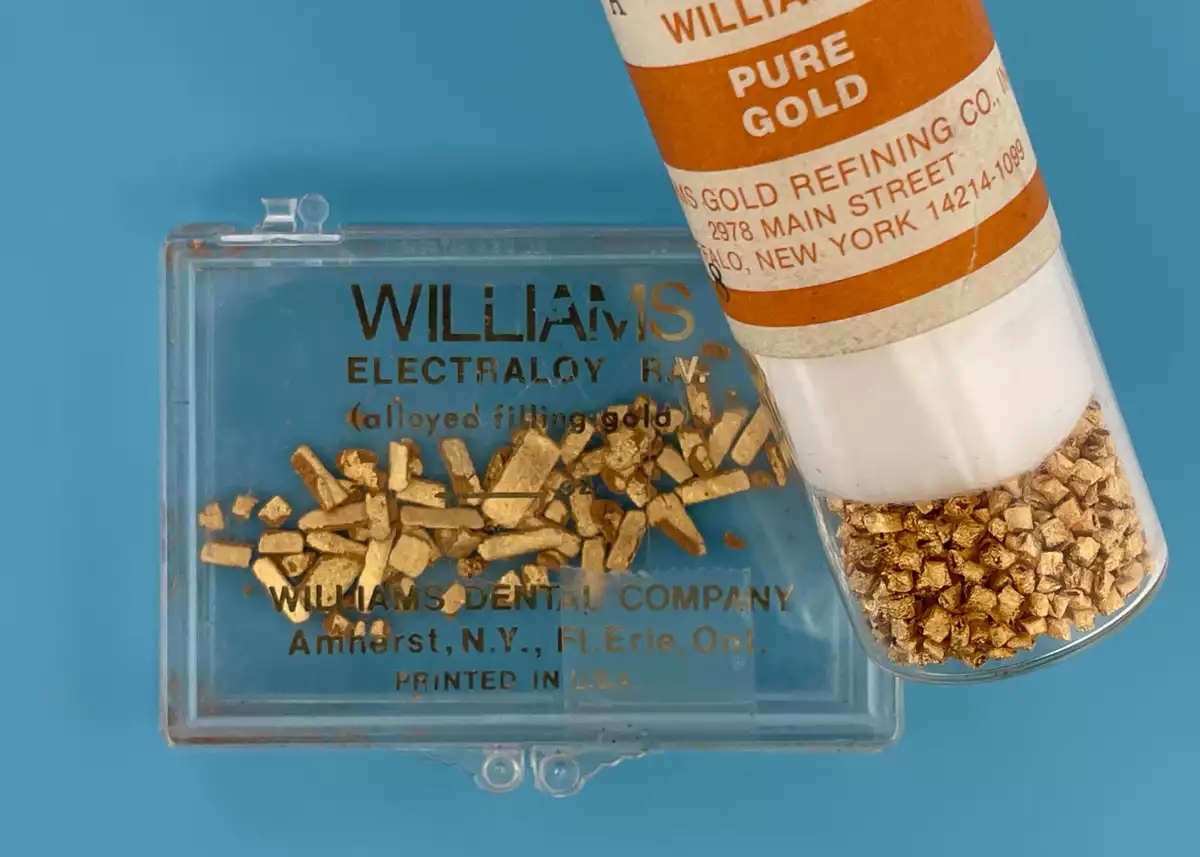
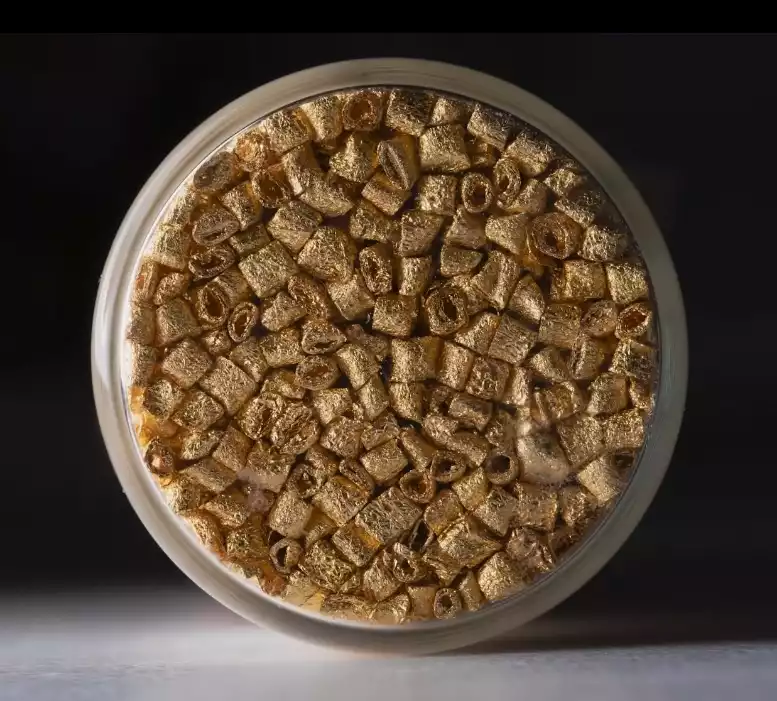
Direct gold – a restoration made from pure 24-karat (99.99%) gold, condensed directly into the cavity – requires no adhesives or bonding agents. Just meticulous preparation, perfect isolation, and experienced hands. The result is an extremely smooth, micro-sealed, biologically ideal restoration that not only coexists with surrounding tissues, but functions in perfect harmony with them.
Yes, gold is not cheap. And one common objection is that it lacks esthetics.
But esthetics is, of course, a highly subjective matter.
In today’s world, where people enjoy decorating themselves with tattoos and bold accessories, a gold filling or crown is no less beautiful than a white ceramic one. When properly indicated, it can be either visible – or completely invisible. That’s its charm. It’s a conscious choice – and sometimes even a beautiful design feature.
By the way, many of our patients who specifically request gold are dentists themselves – people who fully understand its functional excellence.
Gold is more than just a material. It’s a return to fundamentals – to quality, to honest craftsmanship.
It’s simply a cool material – and I hope its time will come again.
Usually, gold crowns are reserved for back teeth but if you simply admire the look of gold on your front teeth, go for it.

